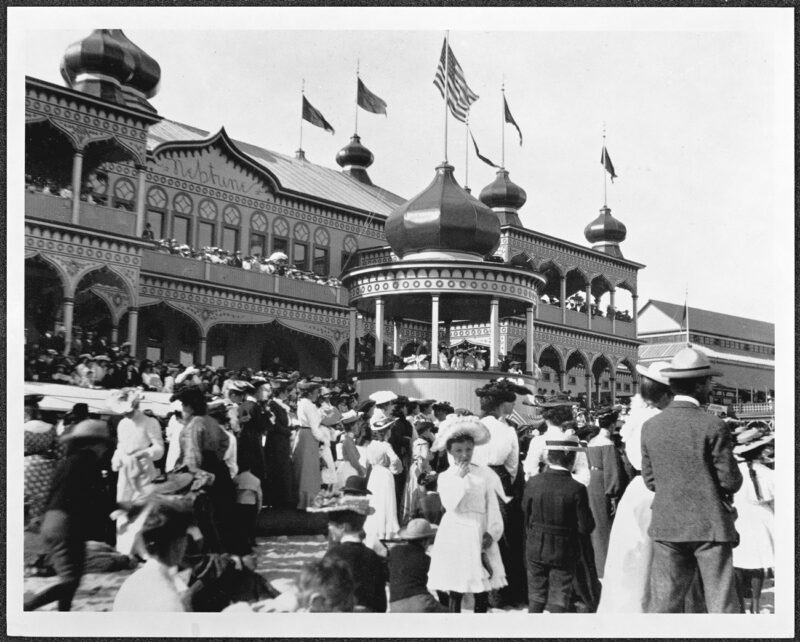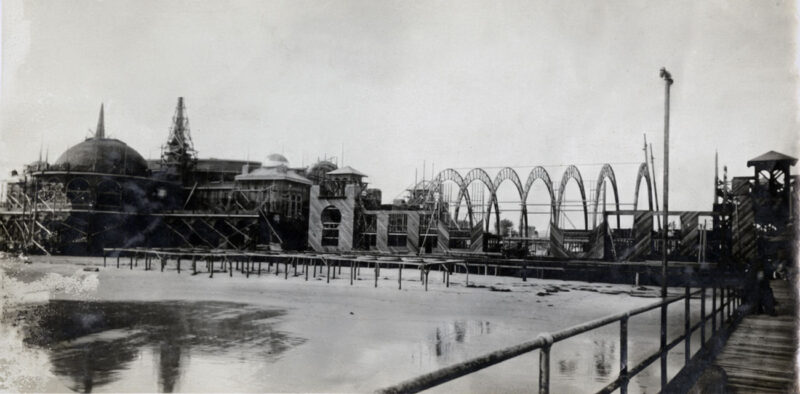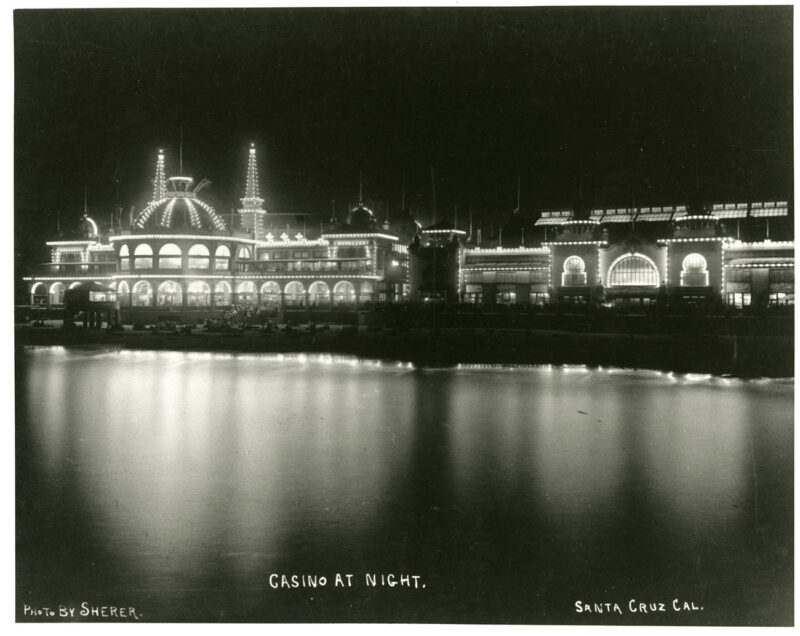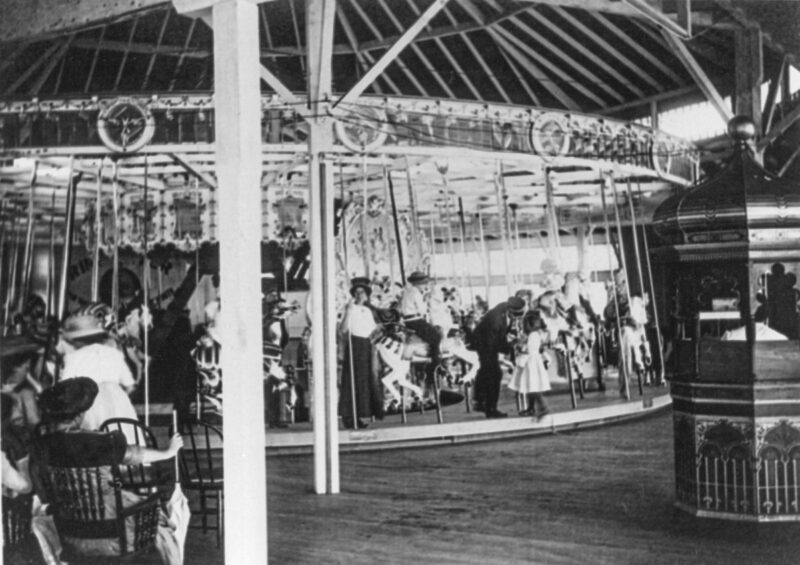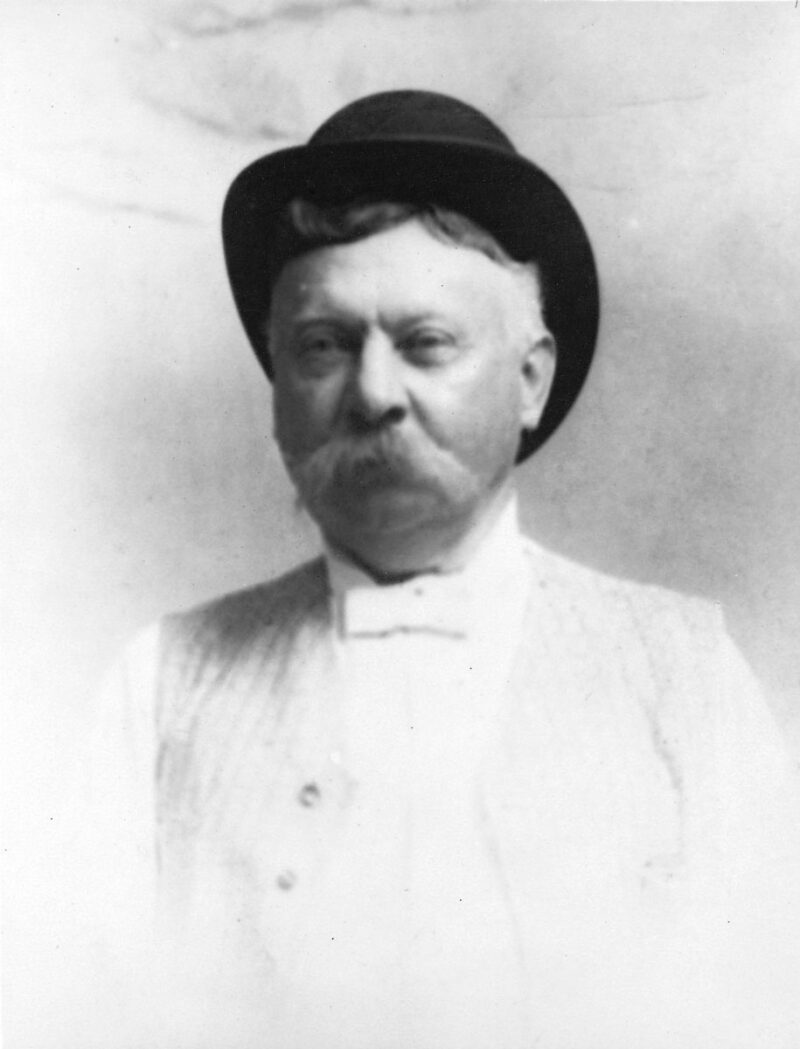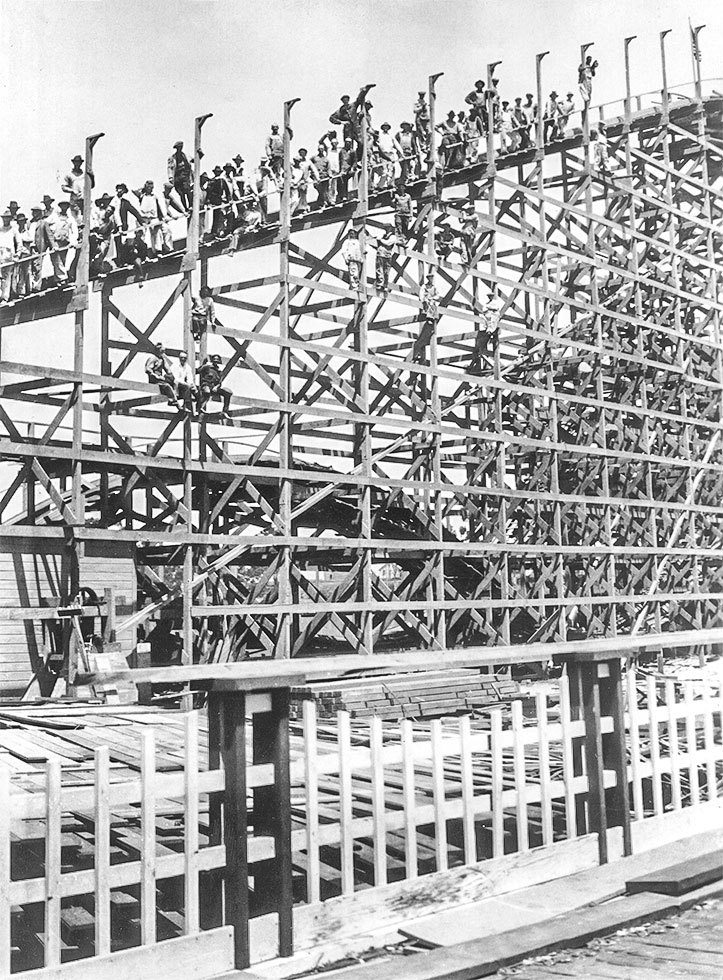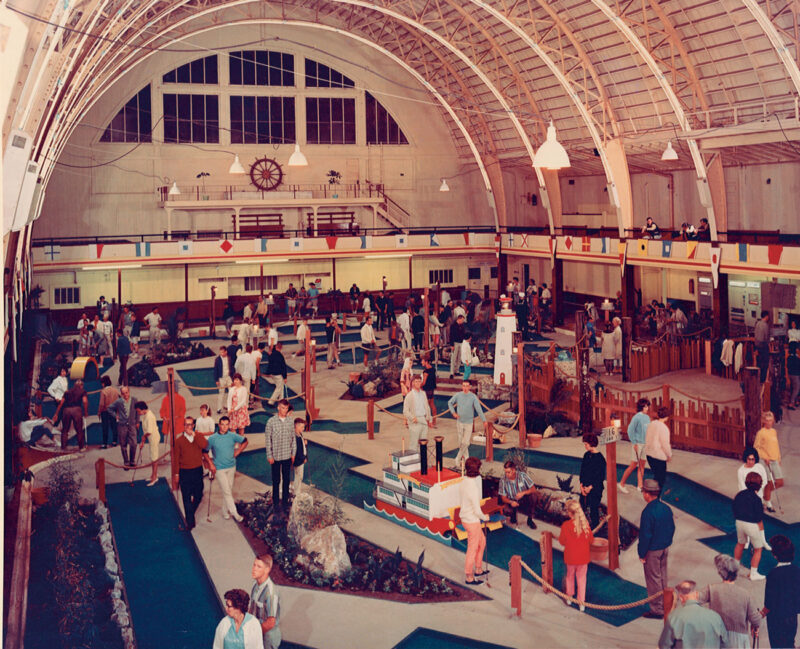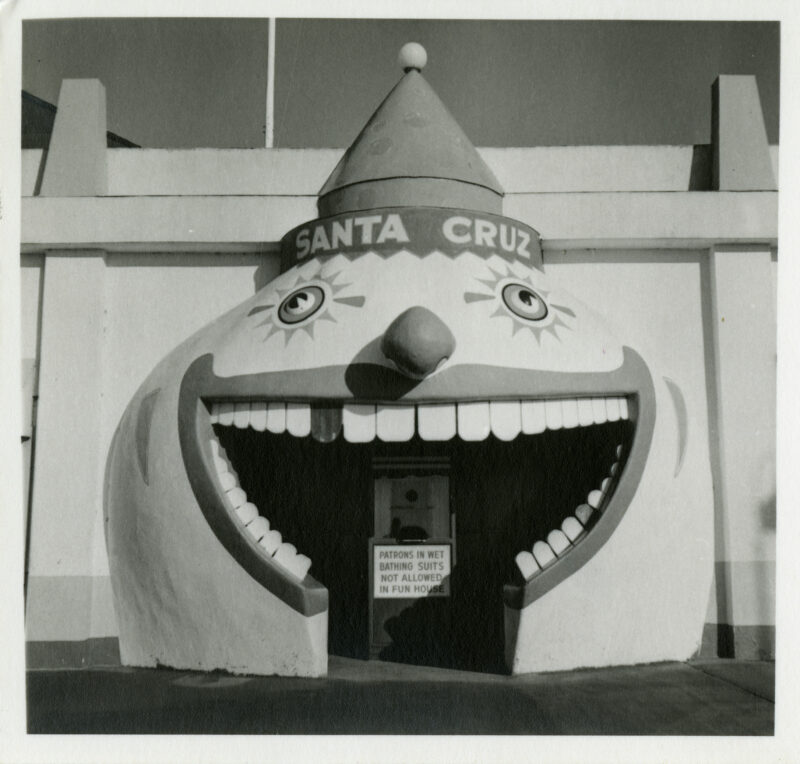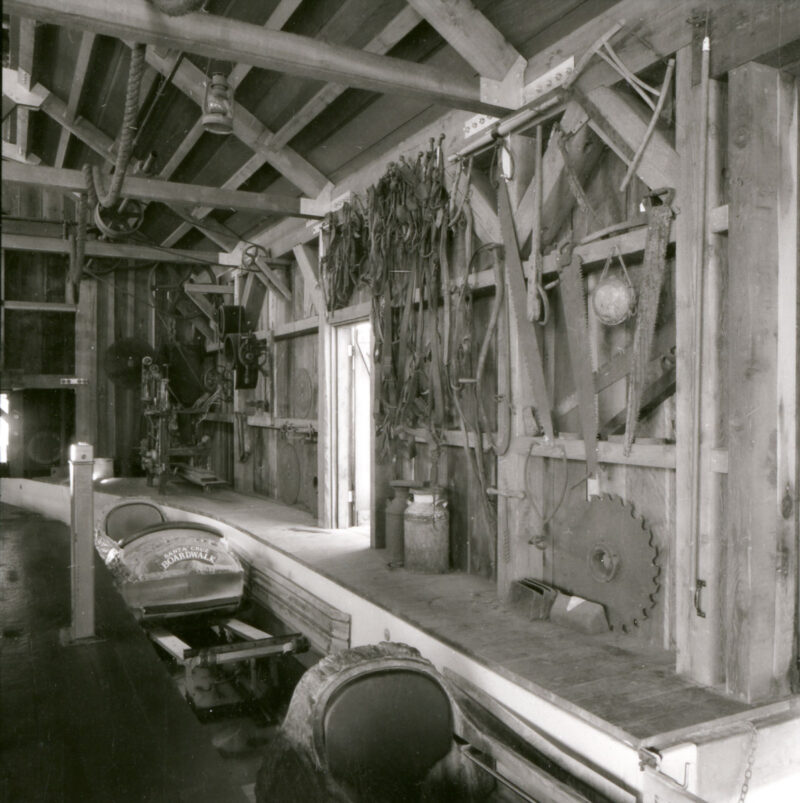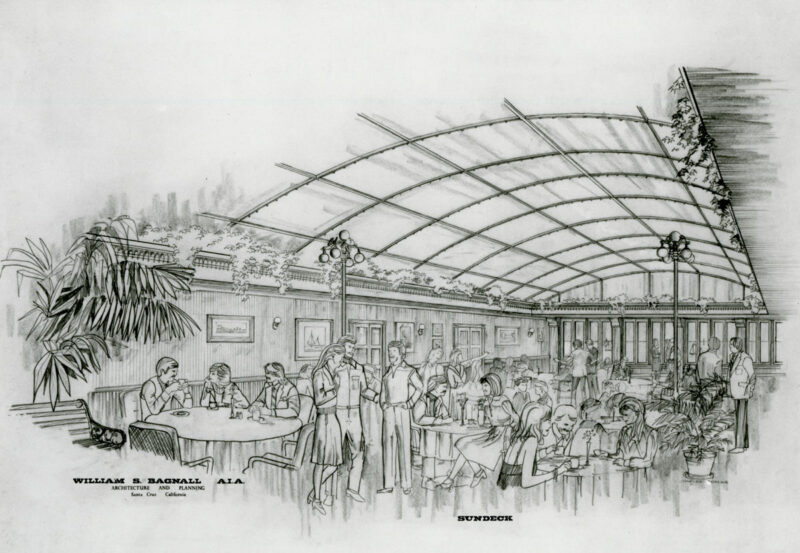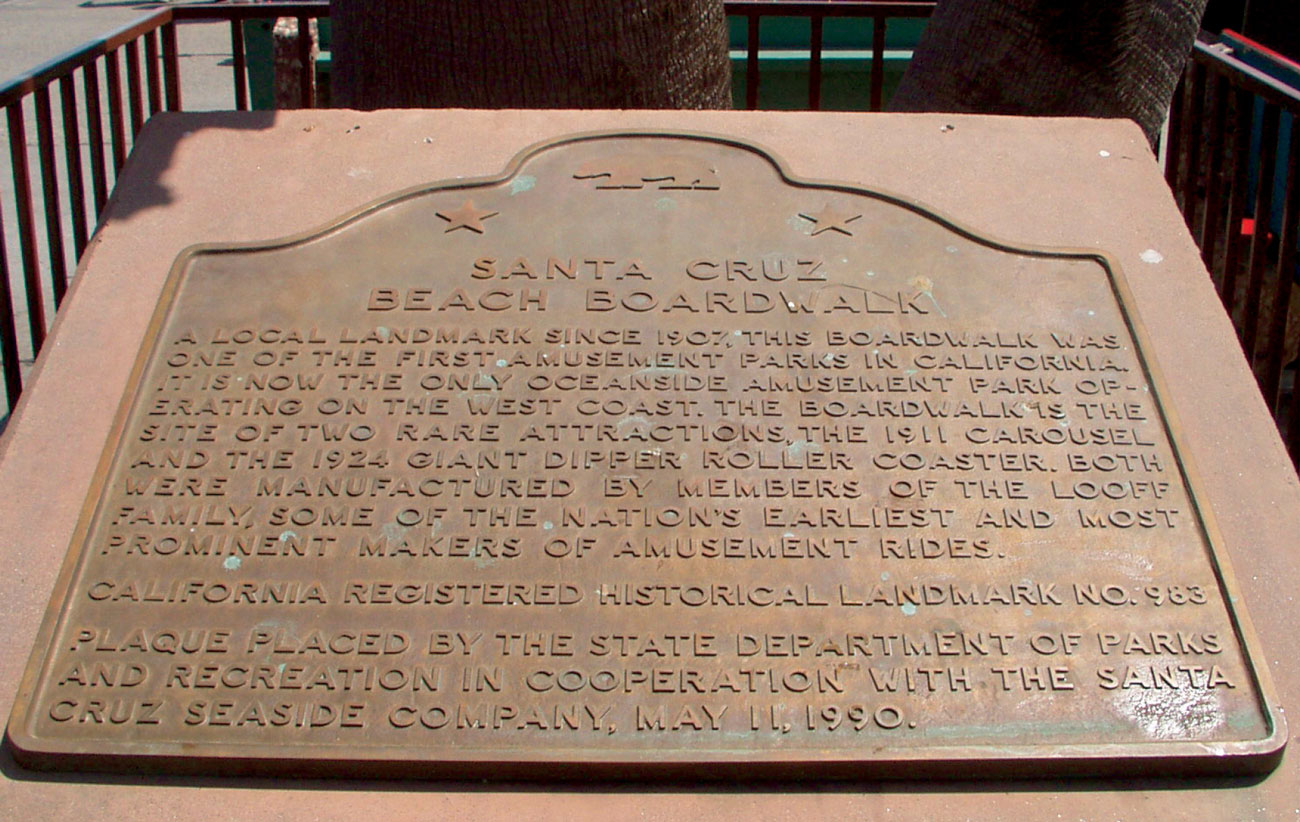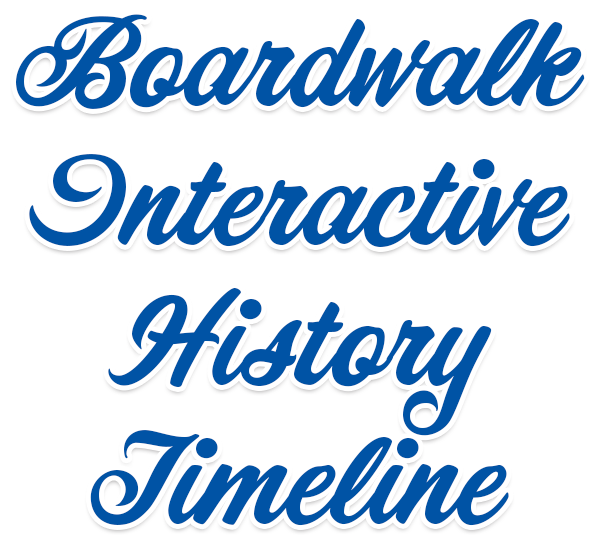

Home › Boardwalk Interactive History Timeline
Take a scroll through Boardwalk History
The popularity of beaches grows in the late 1800s as people come to believe that “taking the waters” is good for their health. Bathhouses spring up along the beach in Santa Cruz, giving visitors a place to safeguard their modesty when changing into bathing clothes before entering the water.
Starting in the 1860s several local families build a number of bathing facilities along the water front, including the Long Branch Bathhouse, the Dolphin Bath House, Neptune Baths, and the Miller-Leibbrandt Plunge Baths. The landscape of the waterfront changes when Fred Swanton secures financing to build the Neptune Casino to the west of the Plunge Baths.
Fred Swanton, a local businessman, wants to develop Santa Cruz into the Coney Island of the West. By 1904 he secures funding and government support to build the Neptune Casino next to the Miller-Leibbrandt Plunge, creating one large beach area tourist attraction.
The beach's first thrill ride, a roller coaster known as the L.A. Thompson Scenic Railway, opens on July 1.
The Looff Carousel has come to represent the heart and soul of the Boardwalk. Charles ID Looff and his team of carvers manufacture the carousel, install it on the Boardwalk, and operate it starting in 1911.
In 2011 the Boardwalk celebrates the Carousel's 100th anniversary with much fanfare.
In order to save the beach operation from bankruptcy, a group of Bay Area investors forms the Santa Cruz Seaside Company and take over operations from Swanton's failing Beach Company.
S. Waldo Coleman serves as the first of 7 Presidents of the Seaside Company.
The Giant Dipper begins operation and quickly becomes the Boardwalk’s crown jewel. It speeds riders along the Boardwalk where the sights and sounds and smell of Pacific salt air bolster the ambiance of this breath-taking experience. It’s the oldest wooden roller coaster on the West Coast and the fourth oldest coaster in the U.S. continuously operating in its original location. The Giant Dipper has delivered thrills for generations of guests for nearly 100 years.
After almost three decades of operation as the Casino Ballroom, in 1934 the remodeled, redecorated, and renamed Cocoanut Grove ballroom opens on May 5. Under the direction of the Troyer brothers, who also operated the Casa del Rey Hotel, the space is decked out with more than 250 real palm trees for a South Seas look and feel. The Cocoanut Grove hosted some of the major names of the Big Band era.
After the tough years of the Depression and World War II, the modernization of the Casino building marks the beginning of a series of improvement projects that elevate the look and feel of the Boardwalk. Completed by then Seaside Company president Laurence Canfield, it also marks the start of the Canfield family's legacy of continuously reinvesting in the park to make it better than before.
The popular Autorama and Cave Train rides open in the culmination of a major development of the Boardwalk's river end that also includes a massive basement to house rides and maintenance shops.
The Plunge pool is removed and replaced with a miniature golf course. When the Pleasure Pier is severely damaged during a winter storm, the Seaside Company management team is forced to make a tough decision: repair the pier and the pipe that brought water into the Plunge pool or demolish the pier and fill in the pool. Due to waning interest in swimming indoors and the cost of repairs the team decides to remove the pier and fill in the pool.
The pool is filled in with sand and a miniature golf course is put on top as a temporary attraction until a more permanent solution can be found. This course remains in place until the 1989 Loma Prieta earthquake.
The Boardwalk's iconic Fun House is razed to make way for a new Bumper Car Ride, food concessions and another coaster ride, the Jet Star, on the upper level of the new building. In subsequent years, successive coaster rides thrill guests, namely the Hurricane Ride, followed by the current Undertow Ride.
In 1976, Marriott’s Great America opens in Santa Clara, CA, just 40-miles north of the Boardwalk. Boardwalk management knows the right new ride will help the park remain competitive and focuses on adding an innovative experience – a flume ride. Unfortunately, the ride’s station could only be located where our beloved Wild Mouse resided. Since 1958, the Wild Mouse gave its riders spine-tingling memories that live to this day. However, the new water ride, Logger's Revenge appeals to the family demographic the Boardwalk courted, more so than the rip-roaring compact coaster.
Forced by the need to repair well-worn facilities and fueled by the desire to expand the yearly business cycle, Seaside Company management undertakes a massive renovation project. It entails demolishing and rebuilding the historic plunge building’s beach-side face. This creates a restored colonnade promenade with new restaurants, gift and specialty shops, and skill games. However, the pinnacle of this enormous undertaking involves upgrading the Cocoanut Grove. That includes adding a new, modern glass-ceiling Sun Room, a fully equipped catering kitchen, a new cocktail lounge, and a basement to support it all.
Although bands have been playing at the beach for decades, The Persuasions perform the first concert in the "Summertime, Summer Nights Free Bands on the Beach" promotion. The series, later known as "Free Friday Night Bands on the Beach," went on to be one of the most beloved events at the Boardwalk. After 32 summers, 2019 marked the final concert series.
California Historical Landmarks are buildings, structures, sites, or places that are determined to have statewide historical significance. In May 1989, the Boardwalk and Cocoanut Grove together are designated State Historic Landmark #983 in recognition of their continuous contribution to the economy and industries of the State of California since 1907.
October 17, 1989, 5:04pm - The 6.9 Loma Prieta Earthquake sets in motion a sequence of unprecedented events at the Boardwalk. In the days and weeks following damage to Boardwalk facilities is assessed and a plan is developed to ensure the Santa Cruz Beach Boardwalk would rise from the quake’s rubble.
The Boardwalk gains national and international recognition and status during its centennial celebration with a series of special events, world-wide press coverage, award-winning PR and Marketing campaigns, and winning the Attractions Industry Golden Ticket Award for the Best Seaside Amusement Park.
A new state-of-the-art dark ride replaces the vintage themed dark rides that occupied the space since the early 1930s. New concessions, guest services office and operations center, along with staff offices occupy the remaining building spaces.
After years of planning the vision for a new Main Entrance and Plaza comes to fruition in 2017 when guests first experience a world-class welcome to the park complete with new rides, attractions, games, and food locations.






